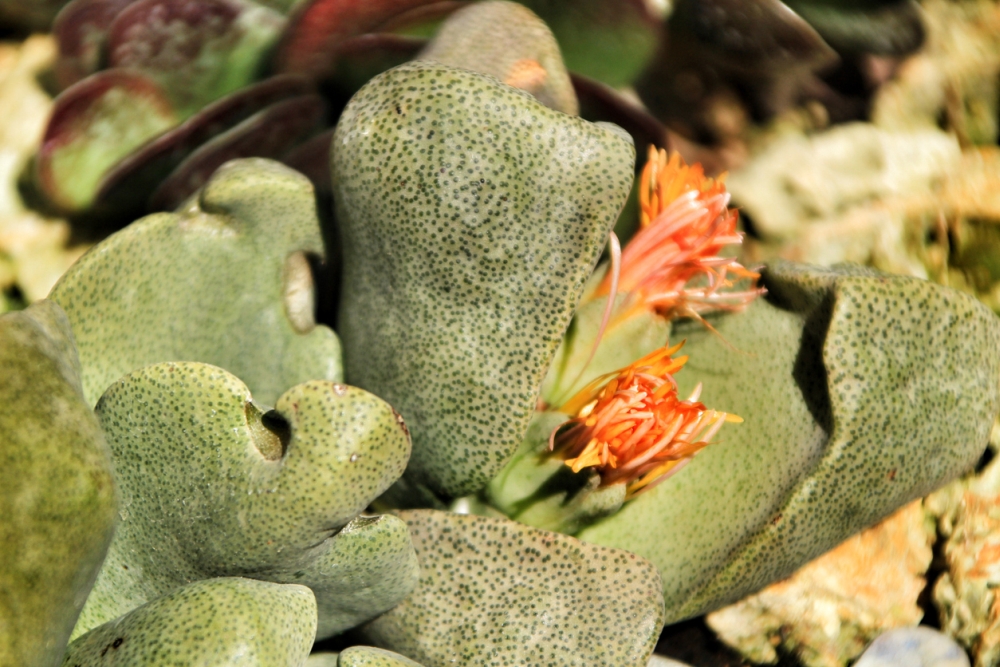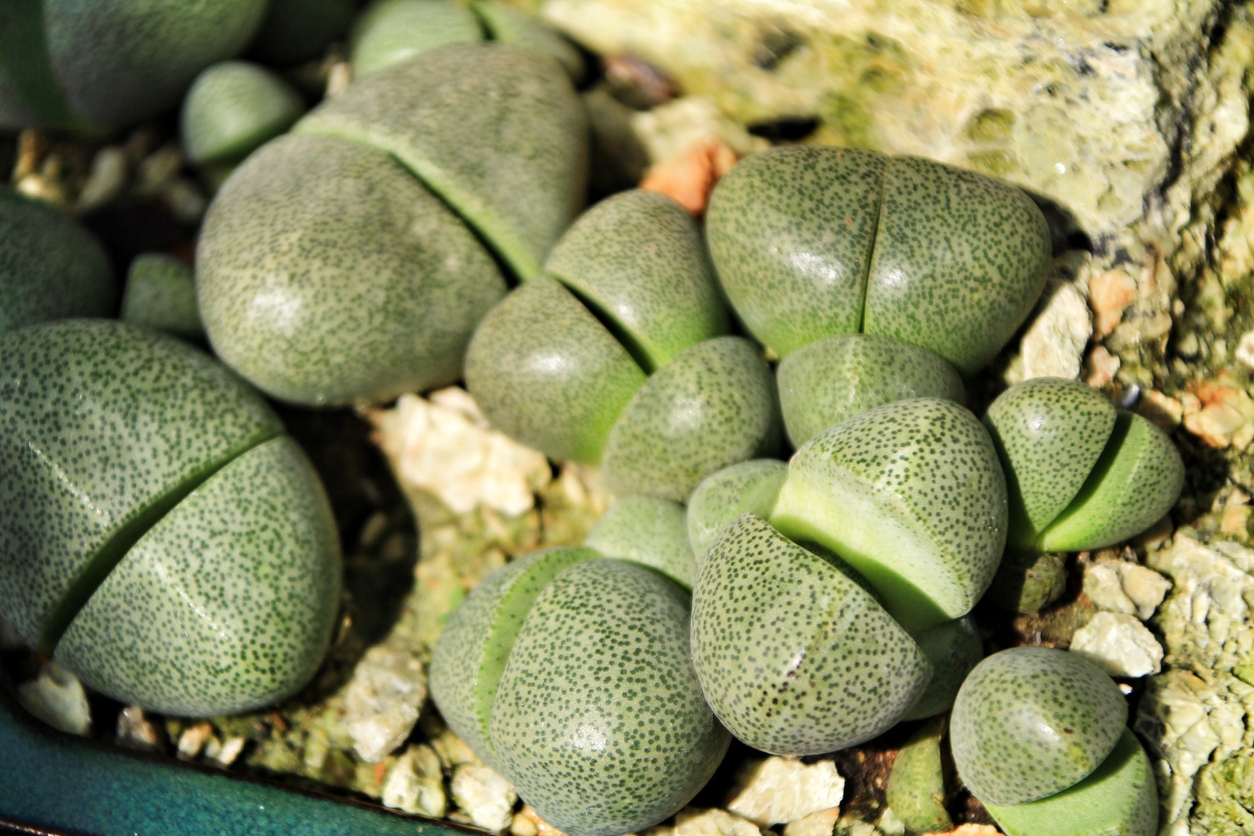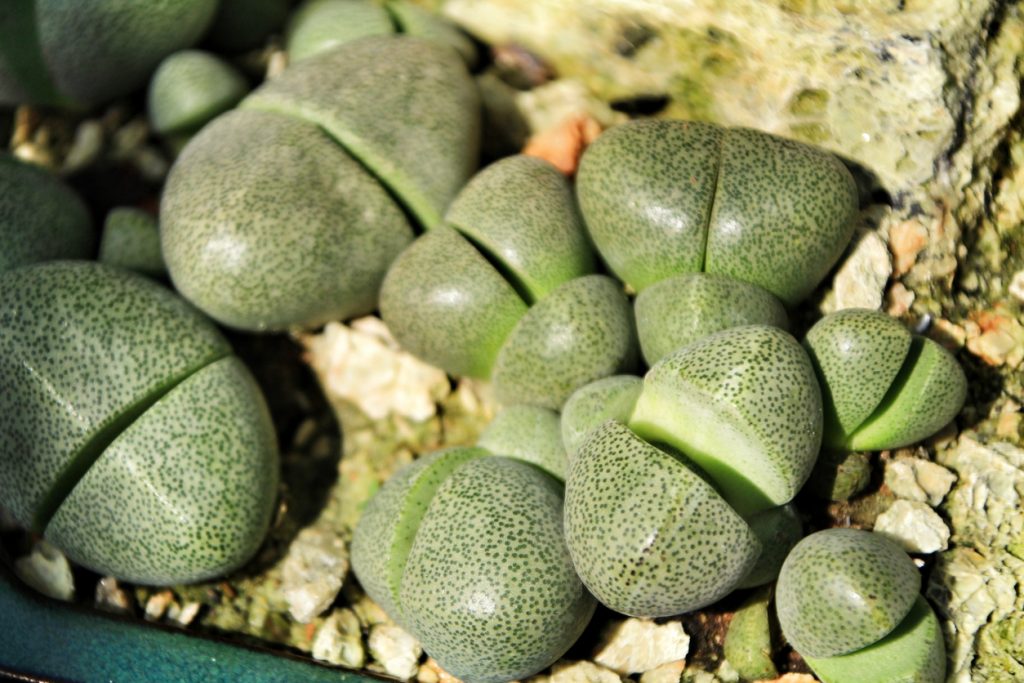Pleiospilos Nelii: Tips on Growing & Caring for the Split Rock Succulent
For gardeners who are more interested in succulent plants, the Split Rock is a unique and exotic variety that you should consider adding to your own garden or indoor collection. It’s a very versatile plant that can be used as an ornamental centerpiece or for ground cover. Also scientifically known asPleiospilosnelii,this species comes from theAizoaceaefamily and is native to South Africa. Let’s go further to unravel the bits and pieces you want to know if you’re looking to grow and take care of the Split Rock succulent.
More About the Split Rock Succulent
From its rugged appearance, you could tell that the Split Rock Succulent is not just limited to indoors; it can survive outdoors and under mild frost weather. Its bright green leaves, and occasionally red flowers both give the plant its appealing colors. You’ll for sure enjoy growing this succulent especially if you’re living in USDA hardiness zones 9 to 11. Apart from its unique beauty, the Split Rock Succulent is also known for its unique shape. Although it has a bulbous appearance, this plant only grows leaves in an alternate manner.
Its leaves protrude and have a fluted shape that makes this plant look similar to rocks that have been split. Even though it has succulent attributes, the Split Rock prefers to grow in shady areas, so you should ensure that the plant gets filtered light during summer and plenty of light during winter. It doesn’t do well with direct sunlight—we’ll look more into its lighting needs shortly.
Split Rock Succulent Caring Tips
Flowering & Fragrance
The blooms usually appear around spring after the dormancy period. They’re usually yellow or red in color, and on rare occasions, they’ll produce white or pink blossoms that resemble daisies. The flowers have a coconut fragrance on them and bees love to hum around a lot often during the blooming cycle.
Watering
Being succulent in nature, it could survive with less when it comes to watering needs. The number of times you need to water your Split Rock succulent will depend on the texture of the potting soil. If the soil is moist, then you want to skip watering for a few days till it dries up completely. If the surrounding temperatures are warmer, then watering it twice a week would suffice. The Split Rock succulent is a hardy species. It can withstand slight neglect as long as the soil is moist and there are enough hours of sunlight.
If the soil dries out a lot faster when the sun rays are too bright, then you need to water it 2-3 times a week in order to keep it alive. Some people would water it every day, however, this may cause root rot and decrease its lifespan if done too much. When it comes to watering, you have to take a look at the potting soil. A good potting mix would be able to retain water for a week or two without getting dry. If the potting mix is too sandy, then it may need watering every day. However, if the potting soil retains moisture well, then you can wait till it dries up before you water again.
So, if you are wondering what’s the best way to keep your Split Rock succulent intact, then you really want to make sure you’re not overwatering them. Keep in mind that as they get older and larger, they may need to be repotted. If you do notice your plant starting to produce fewer leaves or look sickly, you can try repotting it and see if that helps. Also, this is a great way to propagate Split Rock Succulents.
Fertilizer
It’s common for succulents to look gorgeous even without being fed with plant food. But you might want to see the foliage look a lot greener, especially during a growing season. Not every fertilizer out there is suitable for succulents. In fact, it’s far better to use organic fertilizers since they don’t leave any chemical residue in the soil. And one that works best for succulents is a diluted weak solution of fish emulsion which should be applied at half strength every two weeks during spring or summer when the growth hormones are active.
You can also try out worm castings or compost tea bags if the organic way feels like a safer and more viable option.Note that over-fertilizing, especially with chemical solutions causes yellowing of leaves, which might not be exactly what you want.While nitrogen-rich fertilizers are usually preferential for other garden plants, this isn’t the case with succulents such as the Split Rock. In order to nourish this succulent, you want to use a fertilizer that has low nitrogen levels and high levels of phosphorus and potassium.
When succulents are fed with too much Nitrogen, this lowers the rate of absorbing potassium which activates over 60 enzymes responsible for root growth. Nitrogen also induces soft growth that exposes your Split Rock succulent to dreadful diseases. The ideal fertilizer also needs to be balanced with the following: traces of calcium, magnesium, sulfur, zinc, and iron. Other gardening experts recommend using a soluble balanced fertilizer in the ratio of 20-20-20.
Light
Succulents are naturally acclimated to bright light. In most cases, they prefer full sun. However, the Split Rock plant can do well with filtered light. If you want it to be a low-light succulent such as the Star Cactus, a lamp-type light is perfect. For others like the Snake plant, a fluorescent tube or terrarium can provide adequate illumination, and there are no limits if you want to make your Split Rock follow this path. For successful growth, this succulent requires at least five hours of bright light each day. As you know, light is essential for the entire photosynthesis process.
When this natural occurrence takes effect, enzymes are activated to create sugars in the plant leaves which ultimately fuel their growth. As with any plant, light intensity and quality can affect the appearance of the succulent plant, so you want to give your Split Rock some shade especially if it’s growing outdoors. Try as much to protect it from the harshsunlightin the afternoon.
Humidity & Temperature
The Split Rock succulent prefers an indoor environment that’s less humid. However, it is not uncommon to have a little humidity in the air of your house. It’s sensitive to acute changes in humidity levels so if you live in an area with higher humidity, make sure to provide ample airflow and misting options that are easy to regulate. If the air stays muggy or steamy indoors for too long, your plant might feel fussy or even die.
For the record, it’s one of many succulent plants that aren’t hardy enough for colder climates. You can take measures to ensure its survival outdoors but sooner or later, you’ll need to bring it in to survive the winter. The ideal temperature for this plant is between 18-25 degrees Celsius. It will be able to survive in slightly cooler temperatures if given the right care. But when temperatures drop below -1 moving it indoors makes perfect sense, and that’s why it’s best to grow your Split Rock inside a container.
Soil Requirements
As is the case with most other succulents, the Split Rock needs to be potted in soil with a dependable drainage capacity. It is a good idea to add gravel, pebbles, or sand into the potting soil mixture to improve drainage. You can also use clay to make the cuttings sturdier after planting. The split rock doesn’t like too much organic material in the soil, so it’s best if you use cactus potting soil for succulents instead of an ordinary type of potting mixture.
You also want to use a growing pot that has a depth of at least 4’ inches.Vermiculite also tends to help with moisture retention, so we’d recommend using it as an amendment option. The other recourse is to blend a 25% cactus mix with 75% of pumice.The split rock prefers a dry climate so these amendments will help with the water retention and aeration in the soil.
Keep the soil at an even moisture level throughout. The overall health of this succulent deteriorates when its roots are soaked for too long, so it’s best if you don’t let water sit on them for more than a day or two at the most. If you test the soil and it’s dry, you can add a bit of water. It’s not recommended that you water the plant until the first few inches of the topsoil have entirely dried up.
Repotting
The Split Rock is a resilient, slow-growing succulent that can withstand lots of variations when it comes to growing conditions. It will typically need to be repotted at least once every three to five years but will grow on the ground without any need for transplanting. It is important to remember that this plant should be transplanted into new potting soil that’s revitalized with nutrients, for best results.
Regardless of where you want to place the growing pot, the container still needs to have enough drainage holes, so the plant’s roots can develop grow without rotting as a result of being drenched for too long. Be sure not to damage the roots or any of the plant’s other parts when transplanting. It is best to transplant this succulent in the early weeks of spring when the plant is about to start its blooming cycle. You won’t see any solid results if you transplant your Split Rock when it’s in the dormancy phase.
Grooming & Maintenance
When it’s spring or fall, that would be a perfect period to inspect your Split Rock succulent for any unusual flaws. You’ll need to clean up any debris on the edges of the growing medium and remove dead leaves. As the succulent grows older, the lower leaves will dry up and fall off. But that’s a normal part of its life cycle, so there’s no need for worrying. Gently pull out the dead leaves to make room for new growth. Getting rid of the debris helps prevent the breeding of bugs around your plant. Pluck out any bugs or pests you see on your succulent, dead, or alive.
If the leaves are turning yellowish or brown and fall off, that can mean that there’s too much sunlight and it needs pruning to prevent losing all of its leaves. In order for your plant to develop a dense root system, you need to periodically remove the lower parts of its root ball, a process called root pruning, and the perfect time for this exercise is when you’re transplanting. This process will ensure that your plant develops new growth during photosynthesis. If you want your plant to grow nice and sturdy without leggy growth, you’ll need to chop off the heads.
How to Propagate the Split Rock Succulent
You can propagate this succulent easily using offsets or seeds. Seeds, however, tend to take a bit longer to germinate. And the best time to propagate your Split Rock succulent is early spring before new growth when the hormones are retreating from dormancy. Being a stemless plant, it’s impossible to propagate it using stem cuttings. You’ll sources offsets from the edges of the mother plant—they usually fall off from the mother plant.
- If you are propagating using offsets, they should be planted about 3-4 inches deep and about 6 inches apart.>
- The spacing for each seed should be 2-4 inches apart. Plant the offsets into individual containers about 4-5 weeks after germination.>
- The offsets and seedlings should be watered regularly to keep them growing.>
- When they are fully rooted, you can transplant them to the ground so they can be grown into your desired size of the plant.>
- Make sure to prepare the potting soil using tips we’ve shared right under the soil requirements section.>
- After potting them, it’s best to keep them in a light container until you have decided on where to put them when they are fully grown.>
- Give the offsets and seeds a good watering schedule so their roots will grow into the soil and not become leggy or weak.>
Conclusion
It’s no secret that succulents are prone to overwatering. Overwatering can lead to root rot. When the roots die, your Split Rock becomes unstable and tilts, but the effects can be subtle at first. And that makes it hard to recover. The leaves might droop and fall off the lower sides of the plant where there aren’t many roots left to support it. Similar effects will arise if you’re tempted to use too much synthetic fertilizer. Pests such as scale insects or aphids are also attracted to rotting plants, so you want to watch out for these bugs if your Split Rock is suffering from the effects of overwatering.
There are chances you’ll also have to deal with other pests like fungus gnats, spider mites, or a disease such as spore-forming bacteria. Fungus Gnats can spread easily and quickly to other nearby houseplants. They also breed faster than any other pest that attacks succulents. Compared to other pests they’re hard to see as they lay their eggs in various areas of your plant’s leaves and stems. As a remedy, use organic insecticides like a mixture of 1 tablespoon of neem oil or pyrethrum with 1 quart of water, then spray the plant during the normal watering intervals.


